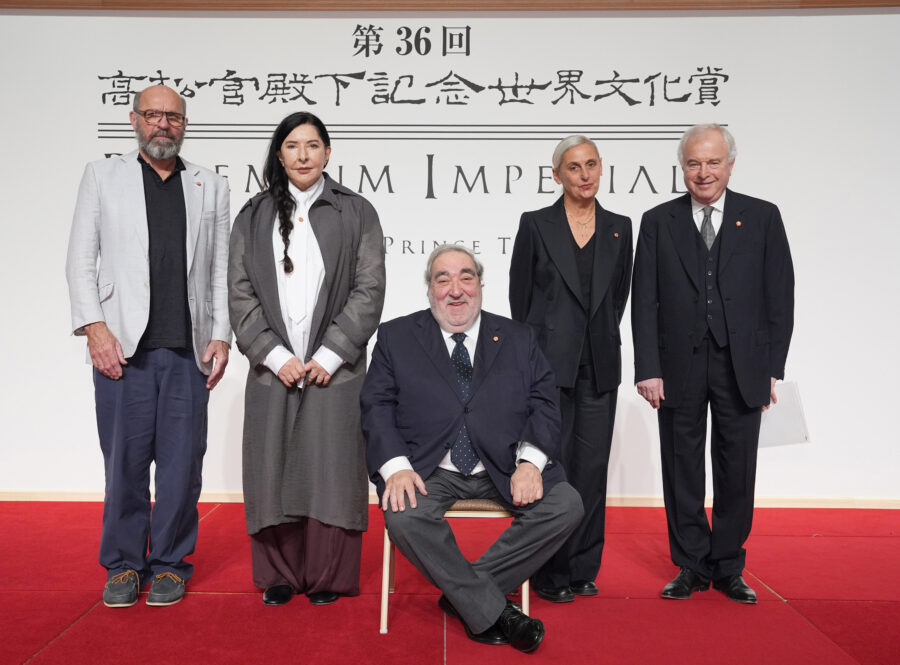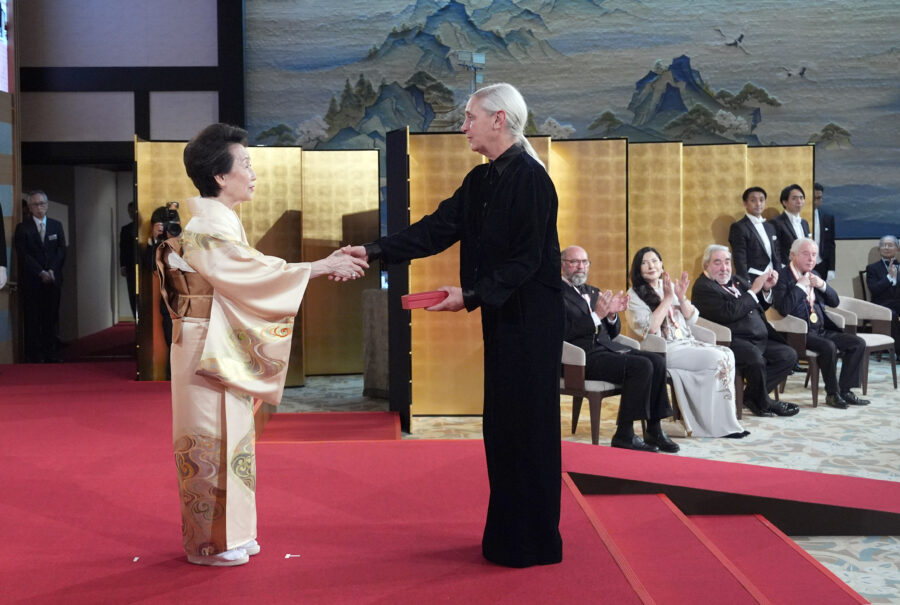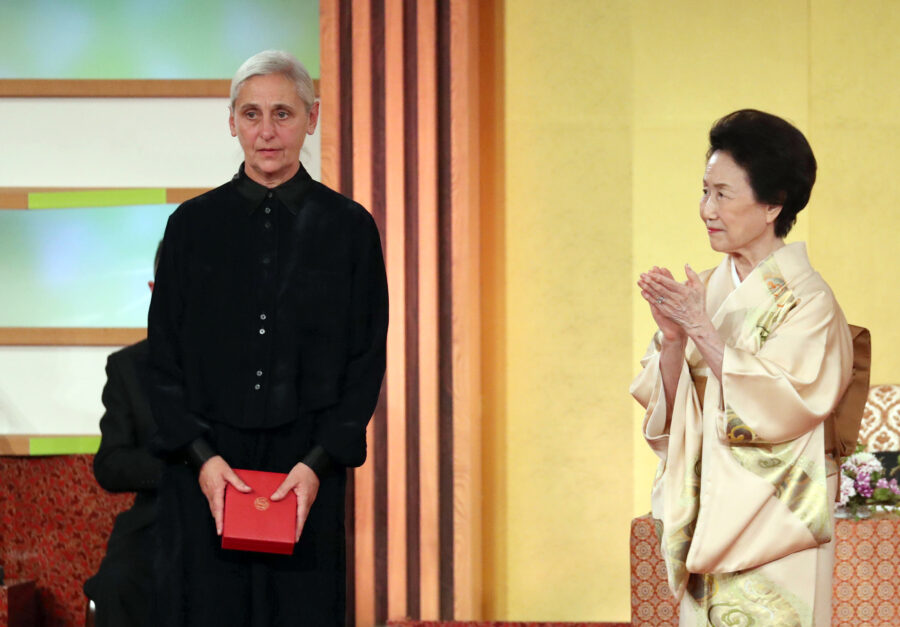Praemium Imperiale
On October 22nd Anne Teresa De Keersmaeker received the Praemium Imperiale, often referred to as the Nobel Prize for the Arts. The award is presented annually by the Japan Art Association under the honorary patronage of the Imperial House of Japan. De Keersmaeker is only the second Belgian ever to receive this honor since the prize was established in 1988 — the first was Pierre Alechinsky in 2018.
Anne Teresa De Keersmaeker is also the very first Belgian artist ever to be awarded in the category of theatre/film since the inception of the Praemium Imperiale. In doing so, she follows in the footsteps of celebrated choreographers and dancers such as Mikhail Baryshnikov (2017), Merce Cunningham (2005), Pina Bausch (1999), and Maurice Béjart (1993), under whom she trained at the Mudra dance school in Brussels.
The Awards Ceremony took place in Tokyo in the presence of Her Imperial Highness Princess Hitachi. The other 2025 laureates are Peter Doig (Painting), Marina Abramović (Sculpture), Eduardo Souto de Moura (Architecture) and András Schiff (Music).
Speech Anne Teresa De Keersmaeker
It is with a feeling of profound humility that I stand before you to receive this Prize. Since the founding of my dance company Rosas in 1983, as a choreographer and dancer, I have been warmly welcomed in this country on many occasions. Several of my artistic collaborators are Japanese. Today, I would like to share with you some thoughts on what I consider the very essence of the art of dancing and its relevance today.
What is the role of the arts in our complex – today, sometimes violently complex world? Is it ritual? We tend to cast the arts, and dancing in particular, as transitional: people have always danced and made music at important junctures in their lives, at moments of both great joy and great sorrow.
In this optic, the arts can bring people together in an act of celebration, consolation, or reflection — three long-standing functions of the artistic. Celebrating, mourning and reflecting are, after all, essential for the mortal animals we are, stuck between past and future. Looking back at the past, being together in the present, imagining the future, a different future — this is the modest bet on artistic beauty we can still make today.
Yet perhaps dance is a bit more unique than some of the other arts — particularly through its bond with that stubborn component of human life, the body. Dance then appears as both the most contemporary and the most timeless of all the arts: what is more in the ‘here and now’ than the body itself? People have always danced.
Yet the body ages. I undoubtedly do. In this sense, dance is both the most historical and unhistorical activity — both completely within nature and yet also rising above it. Similarly, dance seems universal and is also peculiarly human. We humans choose to dance, and therefore we can stand above nature while never fully transcending it. Do the stars dance, the clouds, the birds?
No activity better exemplifies this human experience than dancing itself. In this country renowned for its long tradition of living in a close relationship to nature, despite having also experienced the most violent and devastating forces of human technological interventions in nature, this is the conditional case I can still make for dancing as an art.
As much as I believe in the intrinsic spiritual dimension and healing power of nature, I do believe in the potentially harmonising forces of all the arts and especially dance.
I hope that this modest argument for dancing does justice to the immense honour you are about to bestow on me.
Photos © The Japan Art Association/The Sankei Shimbun



